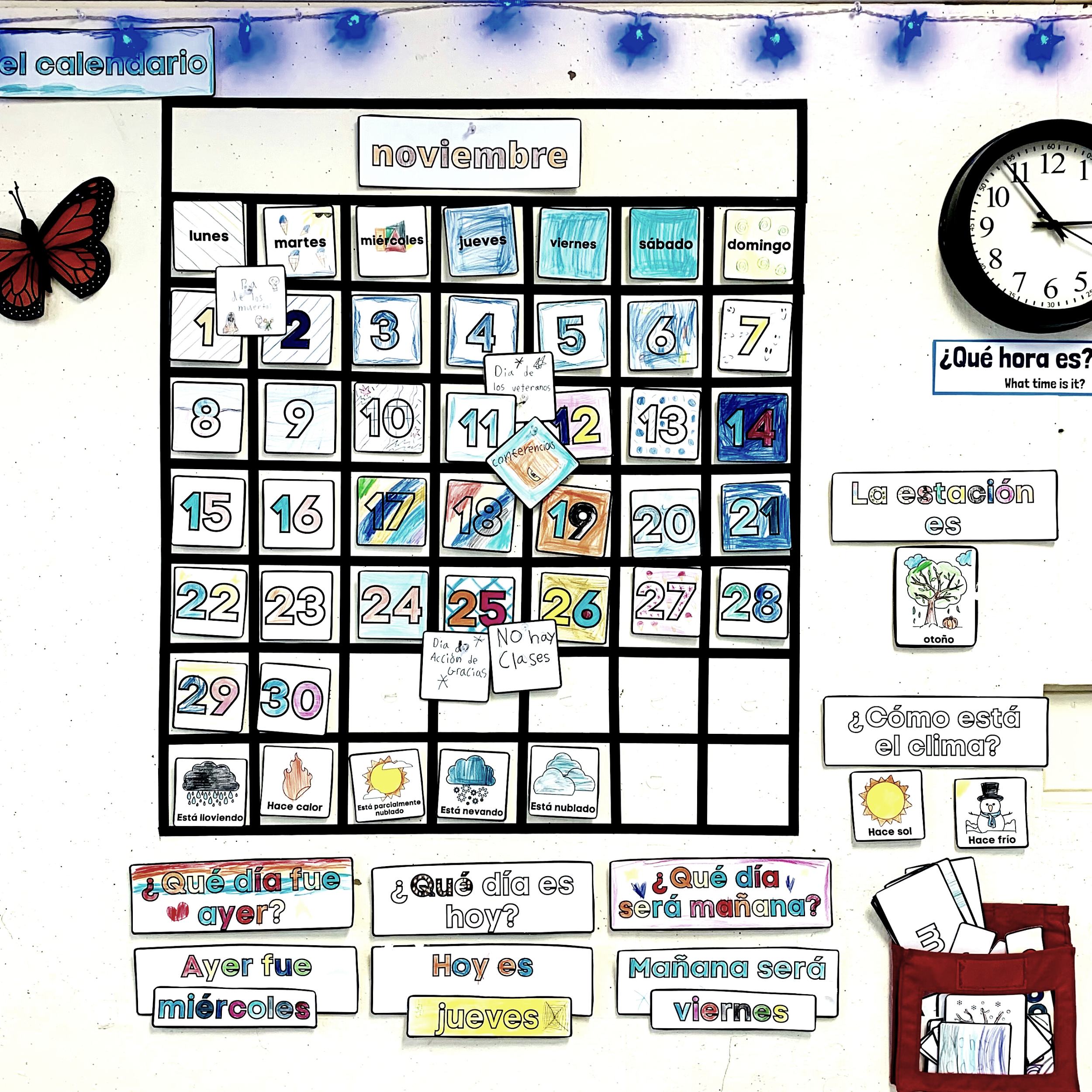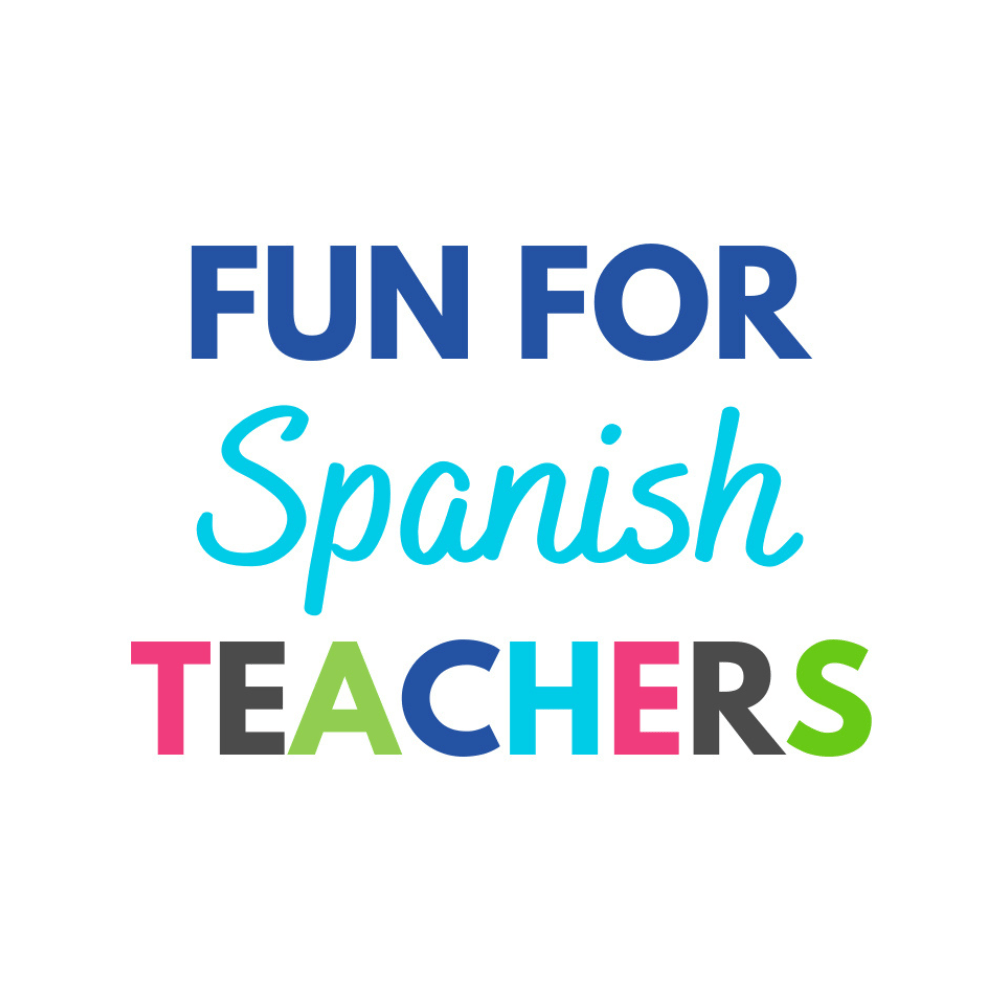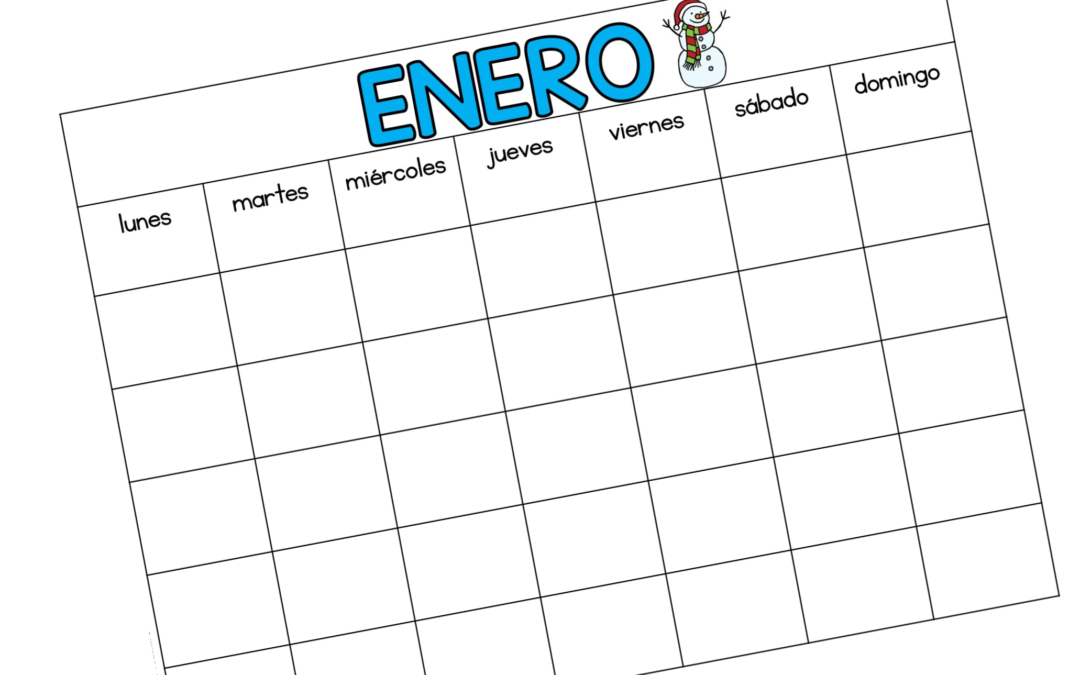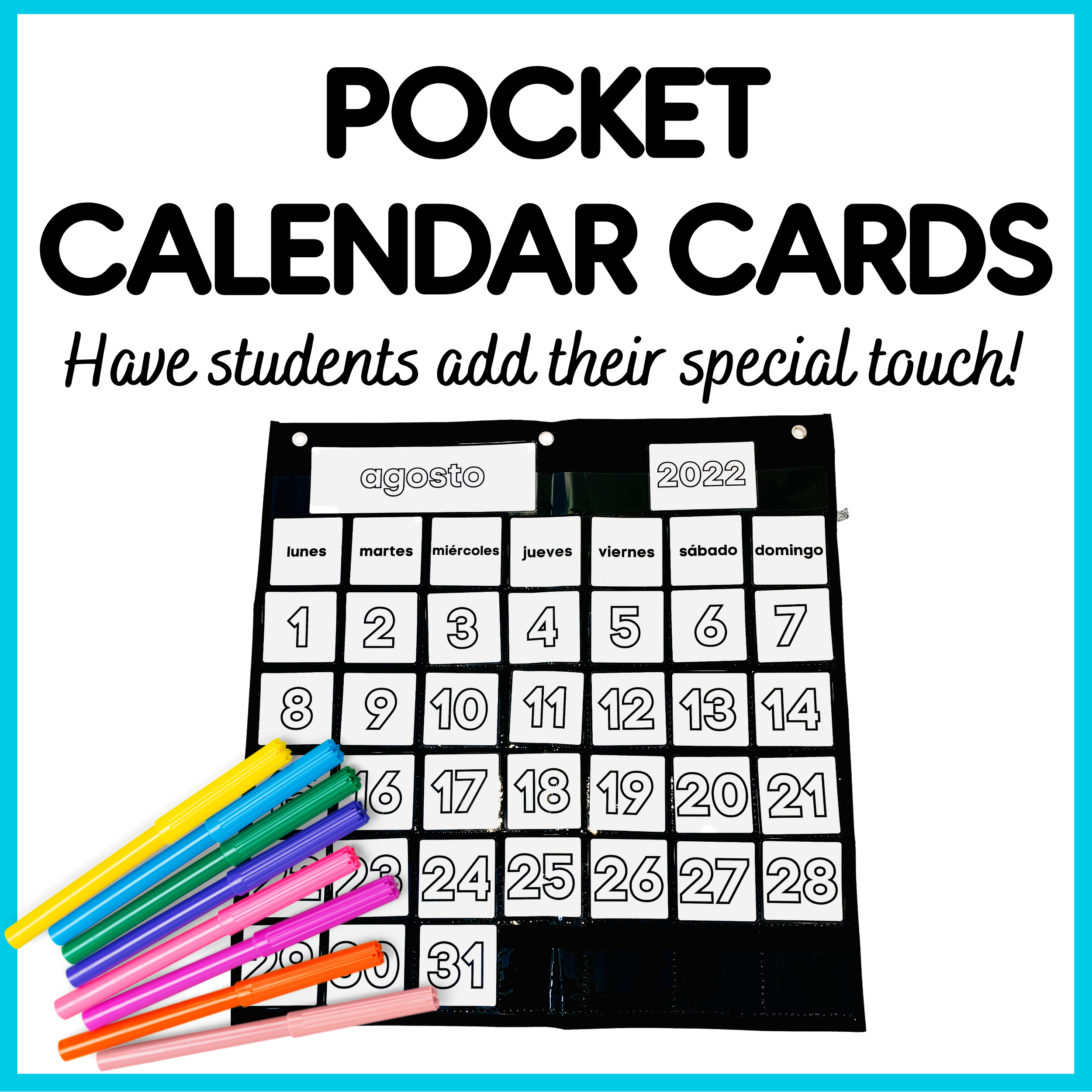Incorporating calendar time into your classroom routine provides ample opportunities to engage and educate your students. I typically begin introducing the calendar in my first grade classes, focusing on numbers one to thirty-one, days of the week, months, and weather. As students progress to second and third grade, we expand our discussion to include temperatures in our school’s city and other places worldwide, not just Spanish-speaking countries.
At the start of each school year, we establish a “birthdays of the month” routine, assigning different days on the calendar for students with summer birthdays. Additionally, we add school events and holidays and discuss who is being honored or recognized each month.
What sets my calendar routine apart is that I allow my students to put their unique spin on our classroom calendar. At the beginning of the year, students decorate the calendar, which they enjoy seeing come to life.
While it’s essential to incorporate different parts of the calendar routine into your lessons, it’s not necessary to do everything in every class. It’s okay to skip certain parts occasionally, such as discussing the weather.

Here are some examples of how you could incorporate calendar time in an elementary Spanish class:
- Counting in Spanish: Begin by counting from one to thirty-one in Spanish. This can help students learn the numbers in Spanish and practice pronunciation.
- Days of the Week: Teach the names of the days of the week in Spanish. You could have students recite the days of the week in order, and also discuss what each day means or represents.
- Months of the Year: Teach the names of the months in Spanish. Similar to discussing the days of the week, you could have students recite the months in order and discuss what each month represents or what holidays fall within it.
- Weather: Discuss the weather for the day and week in Spanish. You could ask students to describe the weather in Spanish, or ask them to guess what the weather might be like in different parts of the world where Spanish is spoken.
- Holidays and cultural events: Incorporate holidays and cultural events that are celebrated in Spanish-speaking countries or holidays that are important for your students and school community. You could discuss the meaning and significance of these holidays, as well as traditions that are associated with them.
- Seasons: Discuss the different seasons of the year in Spanish. You could have students talk about what they like to do during each season, and discuss how the weather changes throughout the year. You can also talk about weather and seasons in other parts of the world.
- Birthday Celebrations: Discuss how birthdays are celebrated in Spanish-speaking countries. You could ask students to talk about their own birthday traditions or share stories about how they’ve celebrated birthdays in the past.
- Poem of the Month: Incorporating a monthly poem into your elementary Spanish class is a simple but effective way to introduce new vocabulary, improve reading comprehension, and teach cultural significance. By selecting a poem that relates to the season or a particular holiday, you can engage your students in a fun and educational activity that helps them improve their Spanish skills.
I hope these examples have given you some ideas on how to incorporate calendar time into your elementary Spanish class. Remember to make it interactive and engaging for your students, and tailor it to their Spanish proficiency level.

You might like these resource available on Teachers Pay Teachers:





